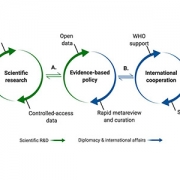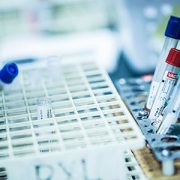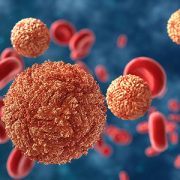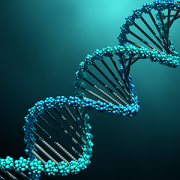Eric Vilain explores “Disorders/differences of sex development: A world of uncertainty”
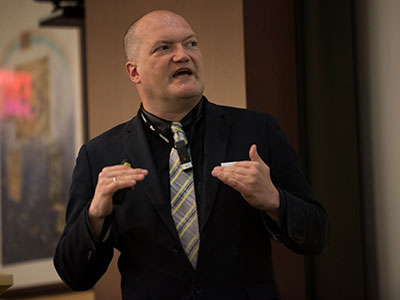
In his keynote address at Children’s National’s Research and Education Week, Eric Vilain, M.D., Ph.D., explored the genetics of sex development and sex differences.
After announcing he would be joining Children’s National as the new director of the Center for Genetic Medicine Research late last year, internationally-renowned geneticist Eric Vilain, M.D., Ph.D., gave a keynote address entitled “Disorders/Differences of Sex Development: A World of Uncertainty” during Children’s National’s Research and Education Week.
Dr. Vilain explored the genetics of sex development and sex differences – specifically differences of sex development (DSD), congenital conditions in which the development of chromosomal, gonadal or anatomical sex is atypical.
“The first step in sex development is looking at genetic sex and how it results in gonadal sex,” Dr. Vilain said. “From a scientific perspective, we are trying to take a step back and assess how cells become more typically male or female.”
He explained that, at conception, the fundamental difference between male and female embryos exists in the sex chromosome complement. Both XX and XY embryos have bipotential gonads capable of differentiating into a testis or an ovary, though embryos are virtually indistinguishable from a gender perspective up until six weeks in utero.

According to Dr. Vilain, the fundamental difference between male and female embryos exists in the sex chromosome complement, though embryos are virtually indistinguishable until six weeks in utero.
Whether or not a bipotential gonad forms is largely left up to the genetic makeup of the individual. For example, a gene in the Y chromosome (SRY) triggers a cascade of genes that lead to testis development. If there is no Y chromosome, it triggers a series of pro-female genes that lead to ovarian development.
However, genetic mutations can alter the subsequent steps of sex differentiation. Dr. Vilain explained that, depending on the genotype, an individual may experience normal gonadal development, but abnormal development of the genitalia.
He also noted that these genes are critical to determining the differences between men and women in non-gonadal tissues as well.
In addition to exploring the genetics of sex development and sex differences, Dr. Vilain’s research explores the biological bases of sex variations in predisposition to disease. His clinic at Children’s National is completely devoted to caring for patients with a wide array of genetic and endocrine issues, particularly cases dealing with variations of sex development.
For seven years, Children’s National’s Research and Education Week has celebrated the excellence in research, education, innovation and scholarship at Children’s National and around the world. This year, the annual event focused how “Collaboration Leads to Innovation” and celebrated the development of ideas that aim to transform pediatric care.


